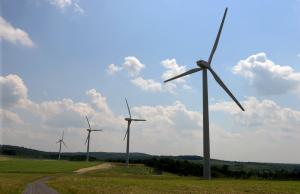May 1 (UPI) — New production from new projects contributed to one of the best quarters since 2014, when oil prices were over $100 per barrel, BP said Tuesday.
The British supermajor reported total oil and gas production averaged 3.7 million barrels of oil equivalent per day in the first quarter, up 6 percent the same period last year. Seven new projects were brought on stream last year, just as the price of crude oil moved steadily beyond the $50 per barrel market.
“Together with stronger oil prices, this growth resulted in underlying pre-tax earnings of $3.2 billion — the best result since the third quarter of 2014, when oil was trading at over $100 per barrel,” the company’s statement read. “By comparison, Brent crude averaged $67 in this quarter.”
The price for Brent crude oil, the global benchmark, was closer to $72 per barrel early Tuesday.
BP Chief Executive Bob Dudley already said that last year was “one of the strongest years” in the company’s recent history. Profits more than doubled for the company in 2017 and production was its highest since 2010.
BP’s full-year profit for 2017 was $6.2 billion, compared with $2.6 billion the previous year.
“We have delivered another strong set of results,” Dudley said Tuesday.
BP in April signed a $6 billion investment deal to tap deepwater gas projects in India and extended its relationship with Brazil, one of the largest producers outside of the Organization of Petroleum Exporting Countries.
Egyptian natural gas prospects improved in February when BP announced gas was being produced from its Atoll basin offshore Egypt, seven months ahead of schedule, less than two years after the initial discovery and 33 percent under the initial cost estimate.
In its view, RBC Capital Markets said the road ahead looks good for BP as it takes advantage of the growing gap, or spread, between Brent and other benchmarks.
“We expect improving earnings and cash generation to show through early 2018 as BP captures higher commodity prices and widening crude spreads,” its emailed report read.
But in a technology outlook for 2018, BP said the cost of wind power declines as wind turbines get taller, rotor blades get longer and control systems become more efficient. New advances for pioneering technologies like wind-capturing kites and bladeless turbines could facilitate more advances in efficiency. By BP’s standards, wind power could become the most economical source of electricity by 2040.
“Over the longer term, our new lower carbon ambitions, including clear targets for our own emissions, will help ensure that all of BP is also focused on advancing the energy transition,” Dudley added.

COMMENTS
Please let us know if you're having issues with commenting.